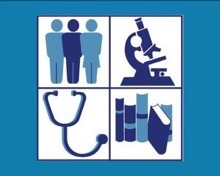 The Infectious Disease Society of America has published updated guidelines for the management of asymptomatic bacteriuria (ASB). The update includes recommendations for previously unaddressed populations and relevant interpretations on non-localising clinical symptoms in groups with high asymptomatic bacteriuria prevalence.
The Infectious Disease Society of America has published updated guidelines for the management of asymptomatic bacteriuria (ASB). The update includes recommendations for previously unaddressed populations and relevant interpretations on non-localising clinical symptoms in groups with high asymptomatic bacteriuria prevalence.
Asymptomatic bacteriuria is a common finding in healthy female populations and in many women or men with abnormalities of the genitourinary tract that obstruct urination. It is characterised as “the presence of 1 or more species of bacteria growing in the urine at specified quantitative counts (≥105 colony-forming units [CFU]/mL or ≥108 CFU/L), irrespective of the presence of pyuria, in the absence of signs or symptoms attributable to urinary tract infection.”
The previous guidelines, published in 2005, recommended screening for and treatment in pregnant women or persons about to undergo invasive urologic procedures. Since the original publication, new evidence concerning asymptomatic bacteriuria is now available and antimicrobial stewardship programs identified non-treatment of asymptomatic bacteriuria as an important opportunity for decreasing inappropriate antimicrobial use.
The updated guidelines made recommendations against screening and treatment for several patient populations, including paediatric patients, healthy pre-menopausal women, non-pregnant women or healthy postmenopausal women, older community-dwelling persons who are functionally impaired, older persons residing in long-term care facilities, patients with non-renal solid organ transplants, and renal transplant recipients who have had renal transplant surgery >1 month prior. Screening is also not recommended for patients with diabetes, spinal cord injury, short-term and long-term indwelling urethral catheters, those undergoing elective non-urologic surgery or surgery for an artificial urine sphincter or penile prosthesis implantation.
Populations recommended for screening and treatment included pregnant women, in which the suggested treatment was 4 to 7 days of antimicrobial agents, rather than a shorter duration. Screening was also recommended for patients scheduled to undergo endoscopic urologic procedures associated with mucosal trauma. For this population, screening and treating of asymptomatic bacteriuria prior to surgery was recommended.
For those undergoing endoscopic urologic procedures, it is suggested that a urine culture be obtained prior to the procedure and targeted antimicrobial therapy prescribed rather than empiric therapy. For patients with asymptomatic bacteriuria who will undergo any urologic procedure, a short course of 1 or 2 doses was advised, as opposed to prolonged antimicrobial therapy.
For older patients with functional and/or cognitive impairment who have bacteriuria and delirium, but who do not have local genitourinary symptoms or other systemic signs of infection, it is recommended that assessments for other causes and careful observation be used in place of antimicrobial treatment. The report could not make a recommendation for or against the screening of patients with high-risk neutropenia (defined as absolute neutrophil count <100 cells/mm3 for ≥7 days) following chemotherapy.
The weight of evidence behind all of these recommendations varies and is summarised in the full report. The report also provided strength of both the recommendation and evidence for each amendment to the guideline. The study investigators also noted that, “current recommendations for treatment of ASB prior to urologic device implantation are based on the results of a single retrospective study,” and that further, prospective studies of a high methodologic quality are needed for validation.
Abstract
Asymptomatic bacteriuria (ASB) is a common finding in many populations, including healthy women and persons with underlying urologic abnormalities. The 2005 guideline from the Infectious Diseases Society of America recommended that ASB should be screened for and treated only in pregnant women or in an individual prior to undergoing invasive urologic procedures. Treatment was not recommended for healthy women; older women or men; or persons with diabetes, indwelling catheters, or spinal cord injury. The guideline did not address children and some adult populations, including patients with neutropenia, solid organ transplants, and nonurologic surgery. In the years since the publication of the guideline, further information relevant to ASB has become available. In addition, antimicrobial treatment of ASB has been recognized as an important contributor to inappropriate antimicrobial use, which promotes emergence of antimicrobial resistance. The current guideline updates the recommendations of the 2005 guideline, includes new recommendations for populations not previously addressed, and, where relevant, addresses the interpretation of nonlocalizing clinical symptoms in populations with a high prevalence of ASB.
Authors
Lindsay E Nicolle, Kalpana Gupta, Suzanne F Bradley, Richard Colgan, Gregory P DeMuri, Dimitri Drekonja, Linda O Eckert, Suzanne E Geerlings, Béla Köves, Thomas M Hooton, Manisha Juthani-Mehta, Shandra L Knight, Sanjay Saint, Anthony J Schaeffer, Barbara Trautner, Bjorn Wullt, Reed Siemieniuk
[link url="https://www.infectiousdiseaseadvisor.com/home/topics/emerging-diseases/antibiotics-antimicrobial-resistance/updated-guidelines-for-the-management-of-asymptomatic-bacteriuria/"]Infectious Disease Advisor material[/link]
[link url="https://academic.oup.com/cid/advance-article/doi/10.1093/cid/ciy1121/5407612"]Clinical Infectious Diseases abstract[/link]
